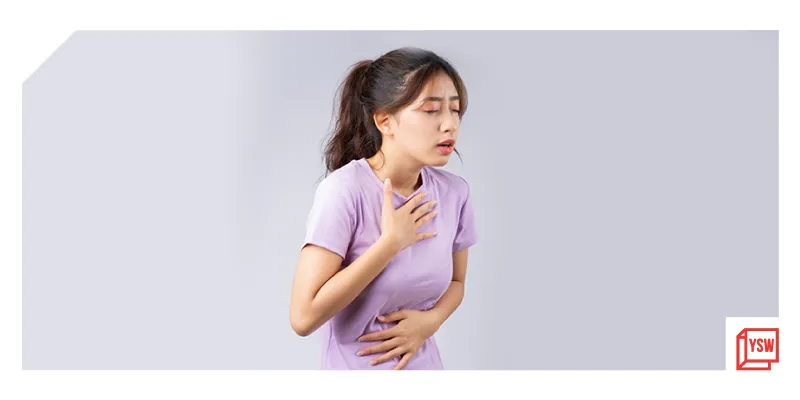Premenstrual syndrome: Root causes, patterns, and how it differs from one person to other
About 80-90 percent of women have some PMS symptoms and these can be physical or emotional changes as compared to the rest of the cycle.
The area that holds the most passion for me is women’s health. Understanding what happens in different women is an art and a science. On this International Women’s Day, I thought it would be wonderful to look through how premenstrual syndrome can be different for different women, what are the root causes of different patterns, and what can we do about it.
In order to navigate this fascinating area, we’ll break it down into three key areas, while looking at it through the lens of functional medicine and Ayurveda.
What is PMS?
Premenstrual syndrome is not just about feeling symptoms a few days before. It can refer to different symptoms which occur throughout the menstrual cycle, between ovulation and menstruation.
Broadly if we consider three different approaches, it helps to understand the root causes of each. This will then support you in adding some appropriate intervention to alleviate your symptoms. About 80-90 percent of women have some symptoms and these can be physical or emotional changes as compared to the rest of the cycle. A smaller percentage can have pain, at time debilitating, and life impactful!
What are the different kinds of PMS?
General PMS symptoms can include anxiety, cravings, irritability, depression, feeling on the edge, bloating, breast tenderness, insomnia, high sensitivity to criticism and more.
Let’s explore this as three broad categories of nervous system imbalance, liver related challenges and lymph congestion. These three broad categories can also be divided as vata, pitta and kapha related imbalance, which triggers symptoms specifically to each.
1. Vata related PMS or PMS symptoms, which resemble anxiety and related symptoms, have root causes in excess dryness, high stress, low sleep, estrogen dominance, adrenal imbalance, poor blood sugar control, low serotonin, and increased testosterone. Not all women need have all the root causes.
However, symptoms include anxiety, insomnia, tension, edgy, irritable, blaming, mood swings, low self-esteem, highly sensitive, overwhelmed, nervousness, and fear. These types of women can also see pain as prickling, sharp, spasmodic, often in lower abdomen or back.
2. Pitta related PMS or PMS symptoms, which are more associated with anger, can have roots in poor liver health, poor gut health, suboptimal bile flow, overwork, and lack of relaxation. Symptoms can include uncontrollable anger, underlying perpetuating irritability, acne, headaches, and elevated body temperature.
3. Kapha related PMS, or PMS symptoms that are more related to fluid retention and depression have roots in poor liver health, congestion in the lymphatic system, estrogen dominance, low progesterone, increased aldosterone, elevated cortisol, and high sugar diets.

Source: Shutterstock
Symptoms generally include water retention, breast swelling, bloating, weight gain, swelling of the feet, craving sugar, craving carbs, fatigue, and depression.
How to relieve these different kinds of PMS?
These three broad categories are quite different when it comes to specific PMS symptoms. However, there are some overlapping root causes, and you can begin with supporting liver health and finding appropriate ways of deep relaxation.
This can include reducing consumption of fried food and poor-quality fats, increasing healthy fats at every meal, being mindful about daily relaxation techniques like meditation, and ensuring that you go to bed early to help yourself get deep sleep.
Beyond that, you can consider some specifics for each of these.
1. Vata related PMS or PMS symptoms, which resemble anxiety, really depend on relaxing the nervous system. Even if you do not make any other changes, taking time out every day to relax, setting a schedule where you do not access social media and all communication in the evening and night, and relax your to do list is key. Most of the challenges in this body type occur from doing too much. Never underestimate the power of taking a pause, if needed several times a day.
Prioritising sleep before 9 pm is critical! The general tendency of this category is pushing so much late into the night, until you just cannot cope any more. Find a guided relaxation or visualisation and play it during the day while you lie down on a solid ground. This helps to feel more grounded and stable.
2. Pitta related PMS or PMS symptoms, which are more associated with anger, require liver support and cooling down. Take a few days before your period where you eat your food with low fats and plenty of plant rich fibre such as beets. This gives the liver a break and it then relaxes. Try to cool down with cooling food such as aloe, coconut water, and barley. Cooling spices include cardamom seed, cilantro, coriander, fennel, ginger (used in moderation), hibiscus, mint, parsley, rose petals, saffron and vanilla. It also helps to oil the body with coconut oil before a bath.
3. Kapha related PMS, or PMS symptoms that are more related to fluid retention need to decongest the lymphatic system. Symptoms of water retention can be so severe that your body feels several sizes bigger. Some women cannot even hook their bra as there is so much weight. It can be upsetting and very debilitating. The very best solution for this kind of PMS is movement of every kind. Walking can help to circulate the lymphatic system, easing most of these symptoms. It also helps to not overeat. Eating just three meals a day with no snacking is very important. This keeps agni strong and maintains better balance in the system.
Start wherever you can!
It’s International Women’s Day! The very best advice I can offer you is to love yourself no matter what! Let protocols not become a source of stress. Start wherever you can. Even if you can only do one thing, start there. Do that consistently every day. This is more important than trying string protocols and not being able to continue with them. Every step you take, is going to keep moving that health towards a much better direction!
Edited by Megha Reddy
(Disclaimer: The views and opinions expressed in this article are those of the author and do not necessarily reflect the views of YourStory.)








